Toilet Flange Sizes & Types Guide
Ever had a loose toilet, probably wiggling, and leaks at the base; then your toilet has a flange problem. Issues with a toilet flange are quite common but to find a quick and lasting solution you have to consider the types and sizes.
The common sizes of toilet flanges range from the standard 4×3 inch, 3 and 4 inches. Based on the materials from which they are made, toilet flange types include cast iron, ABS/PVC plastic, stainless steel, copper, brass and aluminum.
Each of these choices has its features, advantages, and disadvantages. To understand more about them, here’s an in-depth look into the different types and sizes of flanges plus more information that help you make the right choice. But before we jump into that, let’s first understand what a toilet flange is and why its role is quite crucial.
What is a Toilet Flange? Diagram & Parts
A toilet flange is the part of the bowl, usually at the base, that attaches the bowl to the floor and connects to the drainpipe. It is also known as a closet flange.
The following is a photo of how a toilet flange looks like
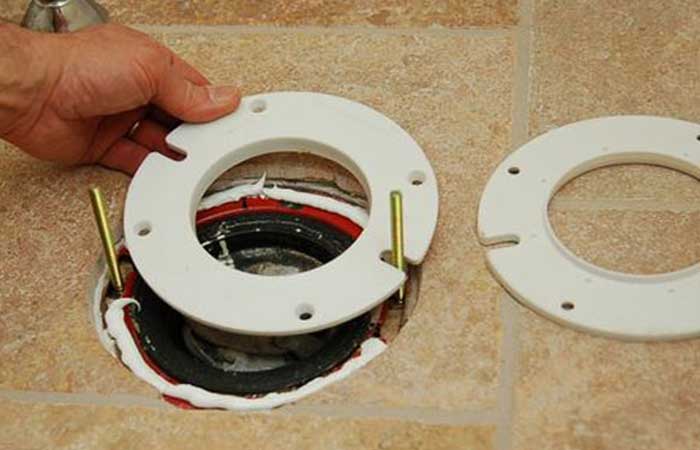
The following is a diagram of a toilet flange with part names.
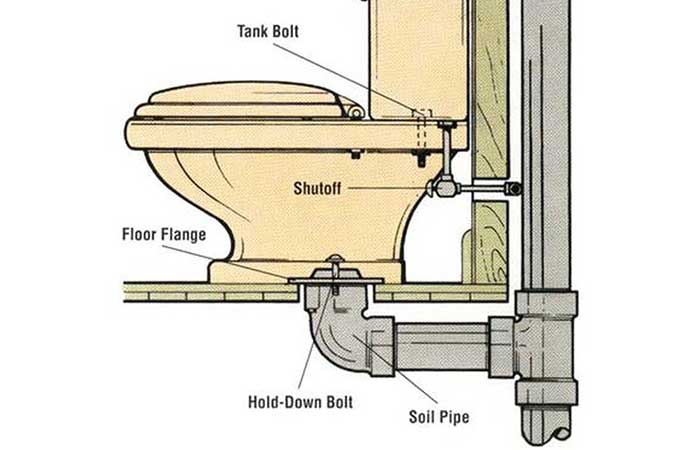
Toilets flanges are made of PVC, rubber, metal, or a combination of these materials.
It comes in a cylindrical shape and a flat surface. The flat surface has space for the wax ring and a section where bolts or screws can be tightly fitted. The toilet bowl is mounted on top of the flange, rather than directly on the floor.
Besides securing the bowl to the floor and connecting to the waste pipe, other purposes of a toilet include preventing water/gas leaks and d damage to the floor during the installation of the toilet.
Toilet Flange Sizes & Dimensions
Sizes of toilet flanges range from the standard four by three inches, four-inch, or three inches flange with the option of an odd fit. To get these dimensions, you measure the widest part of the flange, usually the top and bottom opening.
It is important to note the correct flange size depends on the toilet you have and your piping system.
Standard 4×3 Toilet Flanges
The 4×3 is a prevalent size that fits most toilets and is available in almost all hardware or plumbing stores.
The 4×3 indicates two diameter dimensions; the top part that connects to the toilet, which is four inches, then the bottom diameter of three inches fitted to the drainpipe.
From the dimensions, the top opening is wider than the bottom opening, which allows it to fit to wider toilet models in most homes.
The 3-Inch Flanges
These flanges simply imply three-inch diameters on the top and bottom area. They are the easiest to install as long as the right drainpipe size.
If it’s not a 3-inch pipe, consider using a different flange, as this one may offset the glance and alignment of the plumbing job.
You can also find a 4-inch flange with four inches diameters at the top and bottom, but these are very rare compared to the three-inch closet flanges.
Odd Sized Flanges
There are oddly sized flanges that measure bigger or smaller than the standard 4×3 toilet flange. A good example is one with a 3 1/2-inch bottom diameter and a 7-inch top diameter. This type needs extension kits to raise the height of the flange to fit its new installation requirements.
Others even have a diagonal set opening for additional space, especially for elongated bowls that are replaced over round toilet bowls.
Types of Toilet Flanges
There are six types of closet flanges to choose from;
Cast Iron Toilet Flanges
Cast iron flanges are some of the oldest types of toilet flanges. They are heavy and strong, hence can last for several decades without cracking or disintegrating.
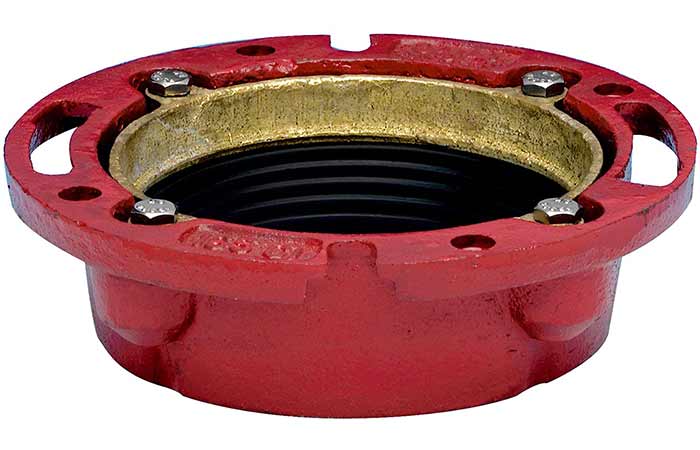
Cast iron flanges are uniquely designed to only fit with cast-iron pipes. They’re, come in multiple sizes including offset flanges.
They are best utilized on drain pipes located lower than the subfloor. They come with an elongated pipe made to fit even deeper into the drainpipe, what they call a deep-body cast iron flange.
One major downside of cast iron is that it is susceptible to rusting. If not maintained properly, it rusts faster than any other metal flange. Depending on the extent of damage, it is possible to repair cast iron flanges instead of replacing them
PVC/ABS Toilet Flanges
Plastic flanges are the most prevalent choice for closet flanges. You can use them for residential or commercial purposes. What makes plastic flanges an excellent choice is that they are affordable, can be customized to fit almost any drain setup, are rust-resistant (durable) and are lightweight.
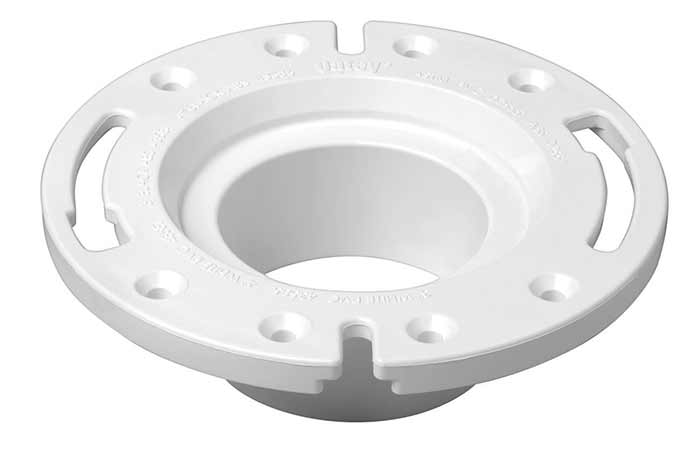
PVS vs ABS Plastic Toilet Flanges
Plastic flanges come in two variations, that is, ABS (Acrylonitrile Butadiene Styrene) and PVC (Polyvinyl Chloride)
The major difference between ABS and PVC flanges is that ABS pipe contains a chemical called bisphenol A (BPA) that strengthens it. This makes it quite durable and better at dealing with very bulky waste.
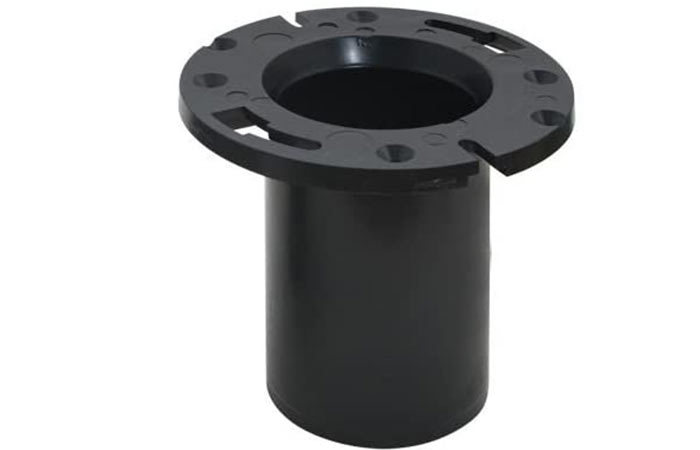
On the other hand, PVC doesn’t have BPA, which means it is weaker but flexible and slightly cheaper than ABS.
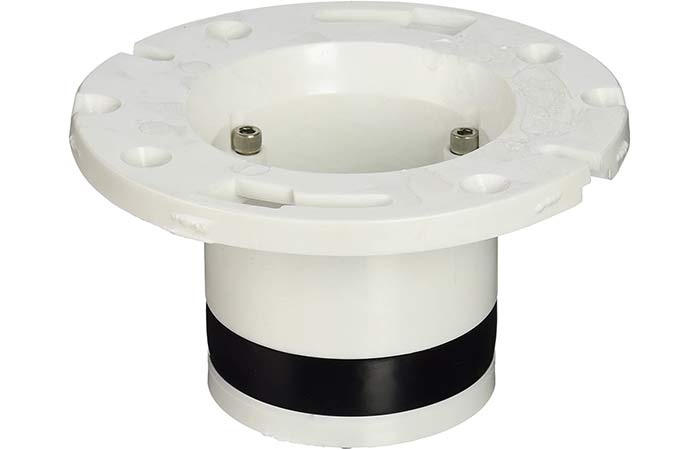
Both ABS and PVC plastic flanges are resistant to chemical and water degradation.
While some types of plastic flanges are 100% plastic, a few come with metallic ring-tops. The metal rings provide added strength to the flange and you can rotate them to allow precise alignment of bolts and screws.
Stainless Steel Toilet Flange
Modern toilet flanges embrace the use of stainless steel to enhance durability. Overall, stainless steel flanges are corrosion and rustproof and they provide better and long-term sealing compared to plastic and other metal flanges.
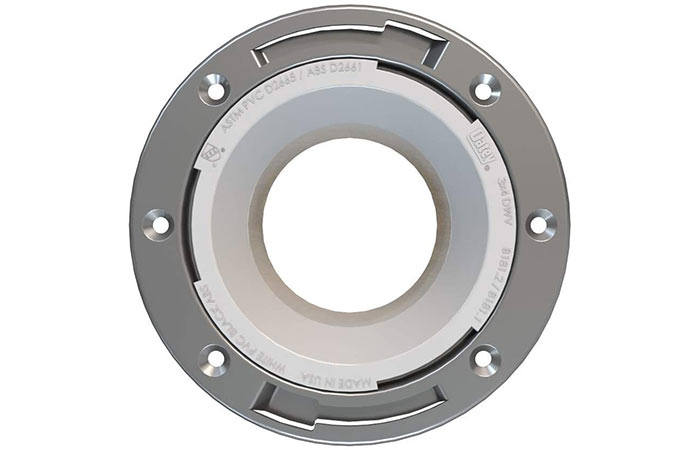
Most of the stainless steel material in these types of flanges is in most cases, only found on the top section of the flange. Other parts are in most cases made of cast iron, plastic, or copper.
Owing to the fact that there are different versions of stainless steel flanges, the most common option is the 304 which contains approximately 8% nickel and 18% chromium. More advanced kinds have added silicone to minimize the chances of oxidation. Luckily, the flange is lighter than the other metal types.
Like brass and copper toilet flanges, stainless steel flanges are more expensive than plastic toilet flanges.
Copper Toilet Flanges
Copper is known to be highly resistant to corrosion, making it extremely durable. They can be rigid or soft and flexible, it depends on your preference.
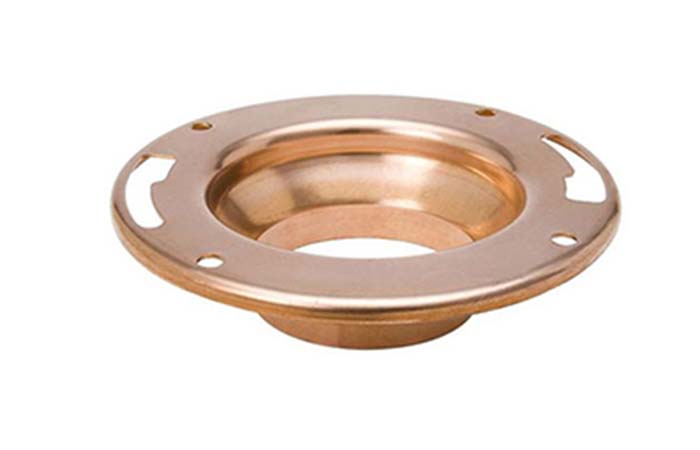
Soft copper flanges bend easily and can be easier to install than the hard type. Hard copper flanges will need elbow joints to allow you to effectively join them to the drain pipe. The elbow joints will aid in matching the space for a perfect fit.
Copper is a popular choice as it’s biostatic, meaning anti-bacterial, as well as antifungal; it’s not a good host for bacteria, fungi, or viruses. Therefore, it’s safer to use for plumbing as it delivers potable water components better than raw metal would.
Brass Toilet Flanges
Brass is an alloy of zinc and copper, therefore very sturdy. It’s rust-resistant, highly corrosion-resistant, and malleable. They come in two ways, simple circular flanges, or those with elbow joints attached to allow for easy connection to the drain pipe.
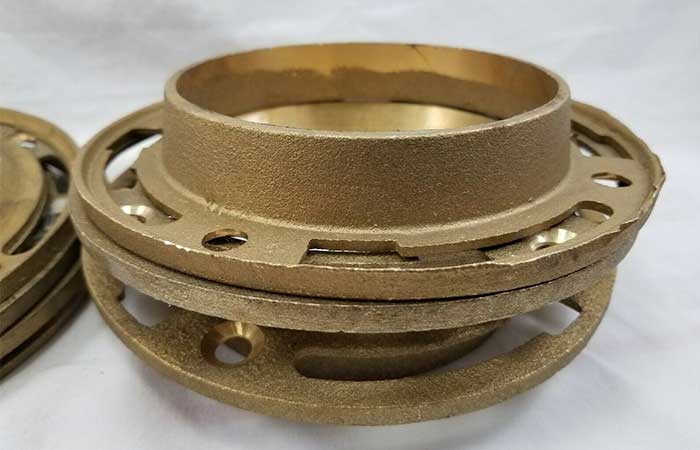
Brass toilet flanges come in multiple shapes and sizes including regular, deep seal, and offset sizes. The material is also heat resistant making it very durable. Unfortunately, it’s very heavy and can oxidize upon exposure to air.
Aluminum Toilet Flanges
Last, but not least, is the aluminum type. It’s light, corrosion-resistant, and sturdy. Used to make primarily the wax metal ring, but can also make the entire flange.
The best aluminum type is unadulterated aluminum, however, an alloy with copper, zinc, magnesium, or manganese can make it more durable.
Other Closet Flange Styles & Shapes
Besides the sizes and materials from which closet flanges are made, toilet flanges can be classified based on other features, including design, how they work/ are installed, etc.
You can slide the flange over the drain pipe or into the pipe. This is why there are only two diameters; three and four-inch flanges.
Push-Tite Toilet Flange
This is a PVC flange that has a rubber gasket around it. The rubber gasket completely seals the inner diameter of the waste pipe; you do not need glue.
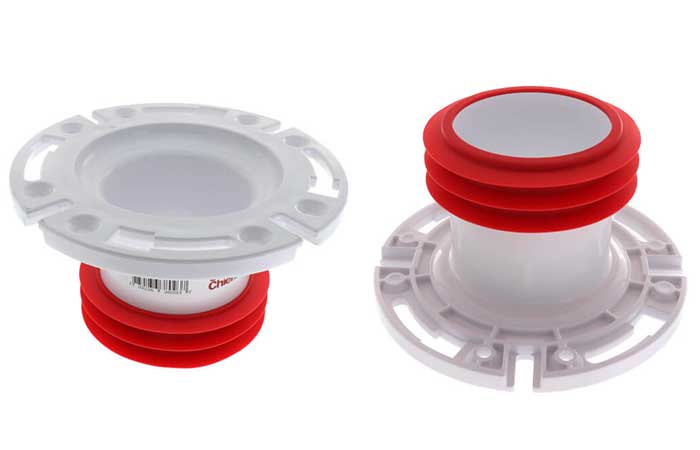
They are quite easy to install; all you need is to push them down into the drainpipe then screw them to the flooring. They are much easier to swap out than glued-in flanges.
Offset Toilet Flange
These are flanges that allow you to reposition the location of your toilet a few inches away or off the center of the waste pipe.
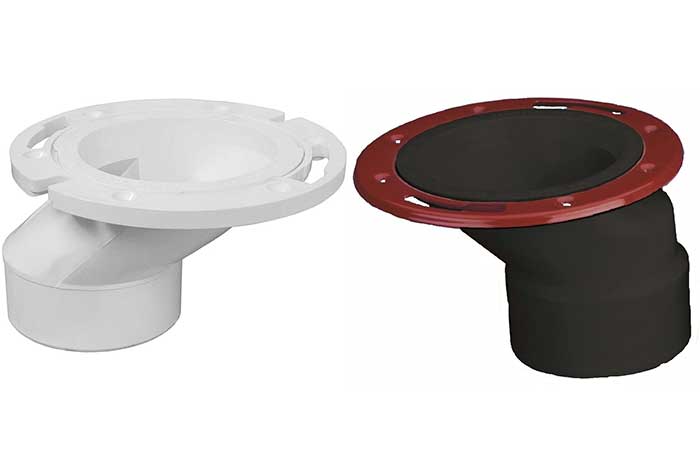
These are convenient for strangely placed drainpipe openings, like when the pipe opening is too far or too close to the wall. They feature an elbow that allows for these adjustments.
Spigot Flanges
Spigot flanges fit into a PVC or CPVC fitting. These are great for giving a slip fitting a flanged end. Unlike push-tite flanges, these require solvent cement for installation.
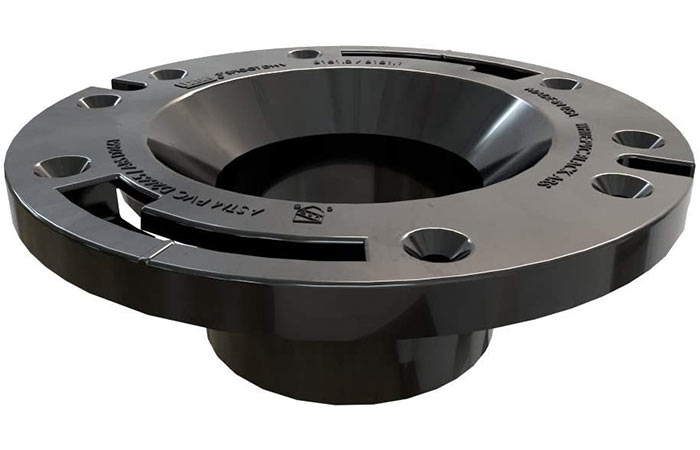
Slip Flange
As the name suggests, this type of flange basically fits by slipping over the drain pipe. Like the spigot type, requires solvent cement for installation.
Slip flanges come in two variations: one-piece and Van Stone. One-piece flanges are solid molded parts. They require care when installing because the flange cannot be turned once glued into the waste pipe.
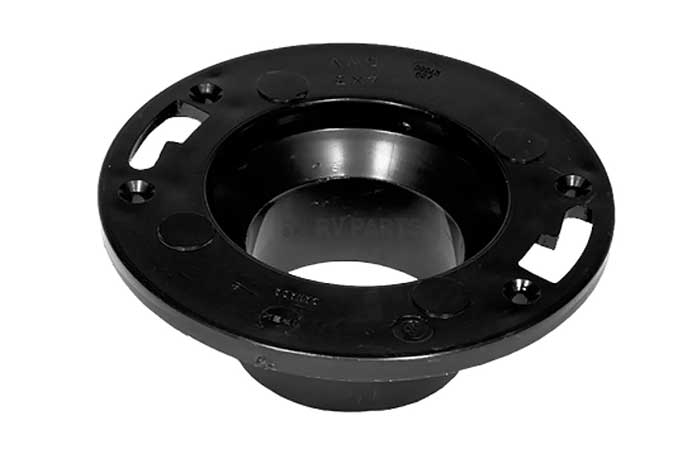
Van Stone Flange
This is a two-piece slip or spigot style flange with a loose rotating ring that allows aligning the bolts easily.
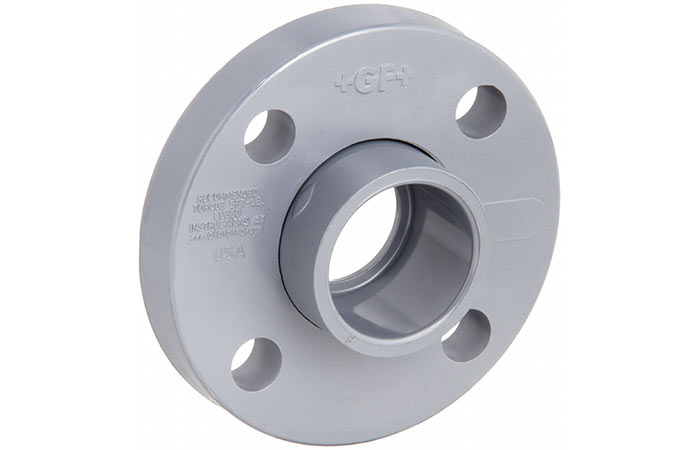
The name van stone, sometimes referred to as conrac, is derived from a process of making a pipe spool with both flanges rotating without the use of conventionally welded or screw-threaded collars.
Threaded Flange
This type of flange has one female threaded end to connect to a male threaded fitting or nipple without the need for solvent cement.
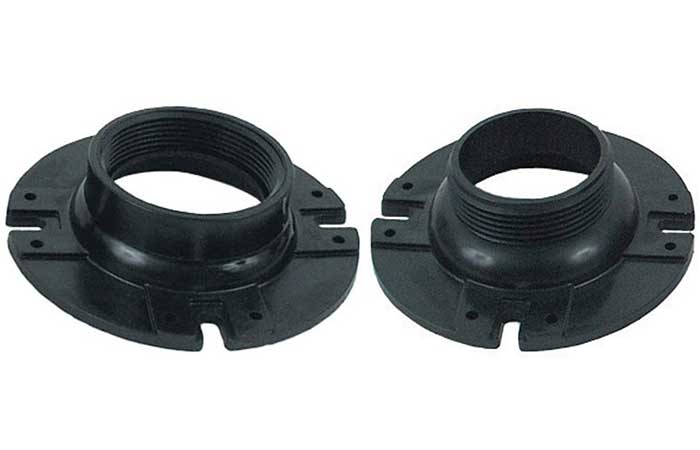
Blind Flange
A blind flange is a solid disk, with no bore (interior diameter) used to cap/block off a drainpipe or to create a stop.
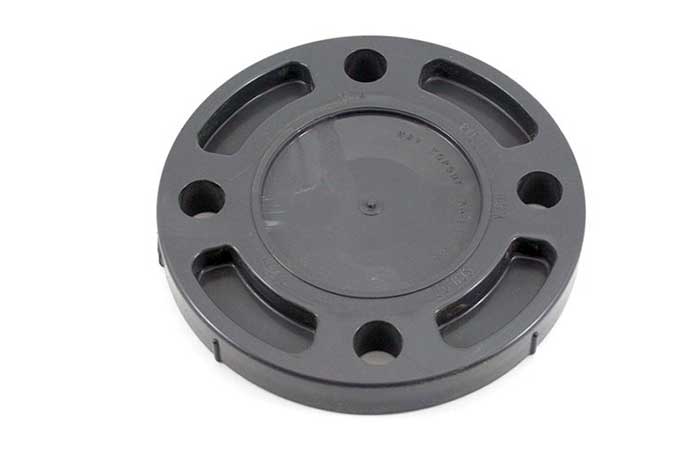
This type of flange comes with mounting holes around the perimeter that allow it to bolt in place to another flanged connection.
Flange Shapes-Regular & Deep Seal
There are three shapes used to design a flange;
- Regular – they are designed to fit around and inside the opening of the pipe. They are a few inches deep into the drain pipe, say five inches.
- Deep seal – these can reach way deeper than the regular kind, approximately 12 inches deeper.
Metal Toilet Flange vs Plastic
Metal and plastic are the major materials that toilet flanges are made from. While some flange manufacturers use both metal and plastic, there are noticeable differences between pure-metal and all-plastic flanges.
| Metal Toilet Flanges | PlasticToilet Flanges |
| Durable if well maintained | Not as durable as metal |
| Some are quite heavy | Lightweight |
| Some metals are susceptible to rusting/corrosion | Rust-free |
| Fireproof-can withstand high temperatures | Have a lower temperature limit |
| Lower expansion rate | Higher expansion rate |
| Less Noisy | Noisy |
| Expensive | Cheap |
Further Reading